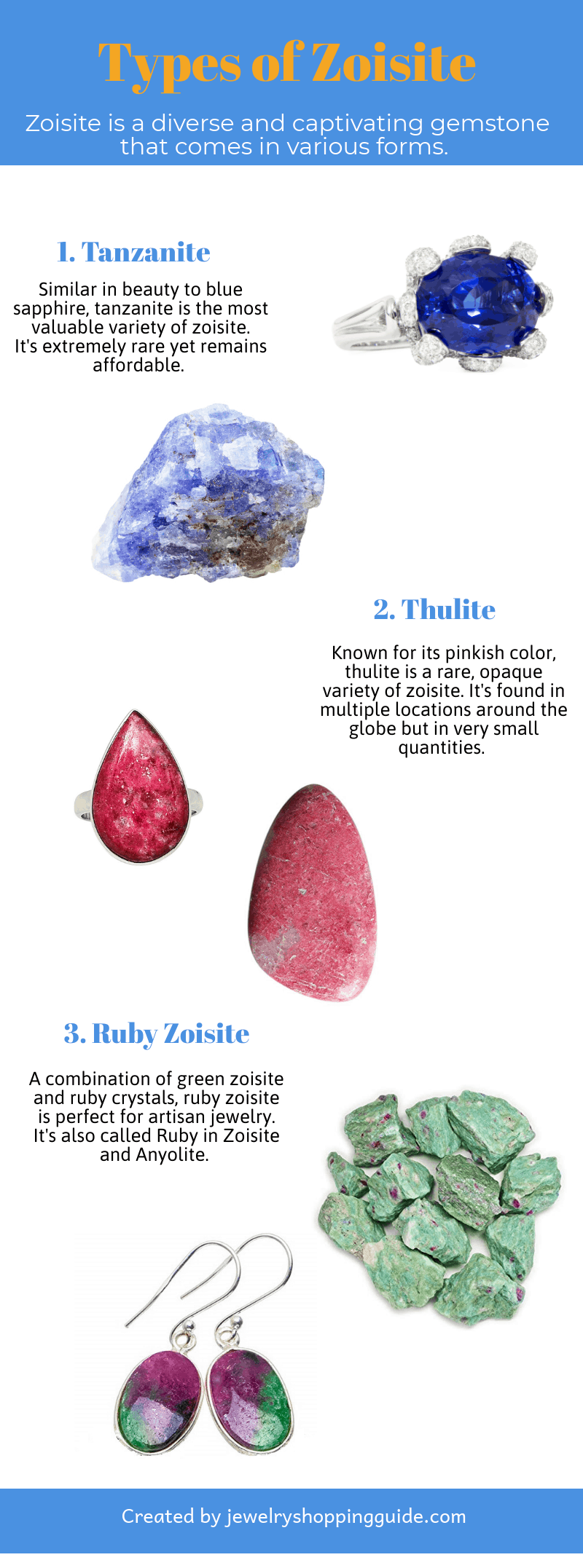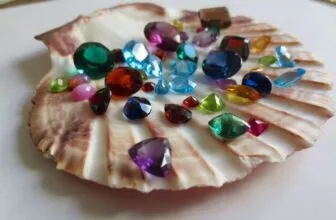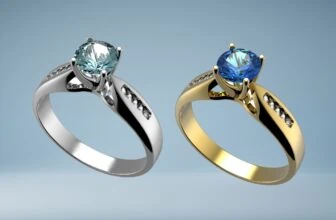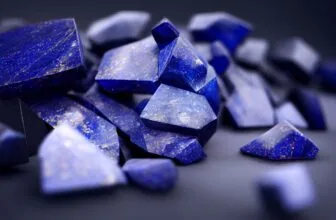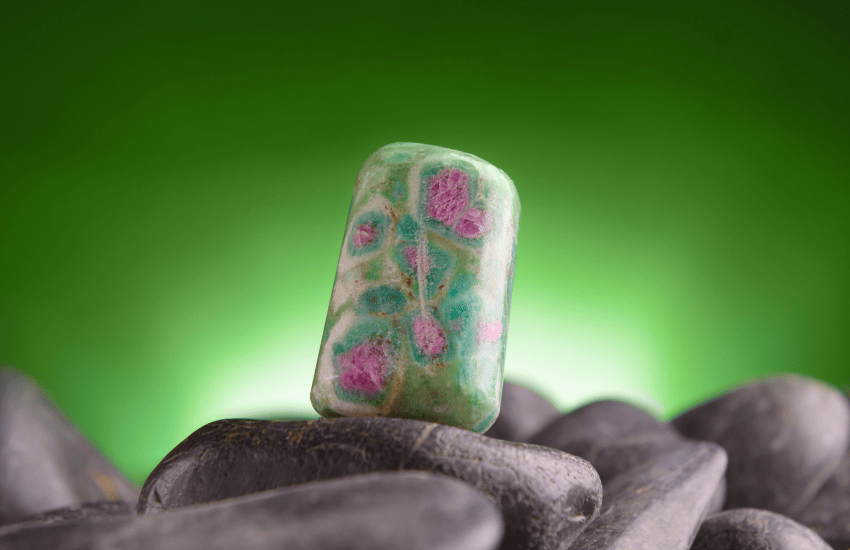
Table of Contents
Zoisite is one of the more diverse and captivating gemstone minerals available in all its variations. Although not a typical mainstream gemstone, zoisite has something to offer everyone, especially gemstone and jewelry lovers. Let’s take a look at zoisite and how to find the right piece of zoisite jewelry for you.
What Is Zoisite?
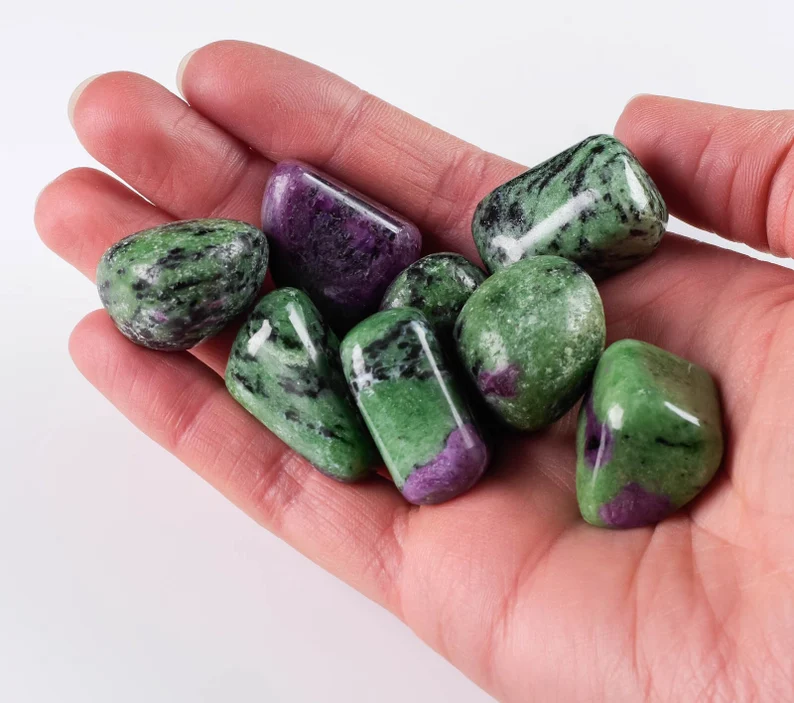
We’re going to get a little technical here so bear with us. Zoisite, also known as saualpite, is a calcium aluminum hydroxy sorosilicate mineral that’s formed during the metamorphism of sedimentary, ingenious and metamorphic rocks. In the right environment, zoisite is found in the form of either prismatic crystals in veins or massive mineral formations.
Zoisite can come in a range of different colors – brown, grey, yellow, blue, violet, green, pink, as well as colorless, depending on its inclusions. It has a vitreous luster but can sometimes be granular or sugary too. It can be either translucent or transparent, and its hardness on the Mohs scale is 6.5 to 7.
Zoisite was discovered and described at the end of the 18th and the beginning of the 19th centuries. Abraham Gottlob Werner named it in 1805 after the Carniolan naturalist Sigmund Zois. Zois had just sent Werner zoisite specimens from Saualpe, Carinthia. The specimens themselves are presumed to have been mined in 1797.
What Are The Most Popular Zoisite Variations?
There are several types of zoisite you might have heard of. The differences between them are based mostly on their color, chemical composition, and mining locations. Here are the ones to note:
1. Tanzanite
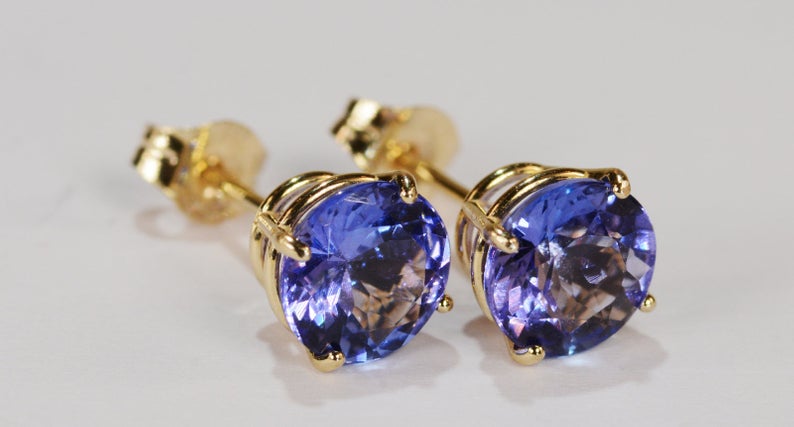
You’ve most probably heard about tanzanite before but did you know that it’s a type of zoisite? Tanzanite bears its name from the region where it’s mined – Tanzania. It is a transparent blue zoisite and is the second most sought after blue gemstone in the world after sapphire.
Aside from the naturally found blue tanzanite, a lot of the other tanzanite stones you’ll encounter on the market are actually heat-treated brown zoisite stones. The heat treatment changes the oxidation state of the element vanadium in the stone and results in the blue color we love.
It is a stable treatment, however, so you won’t have to worry about it reverting back to brown after your purchase. Read more about tanzanite in our comprehensive guide.
2. Anyolite
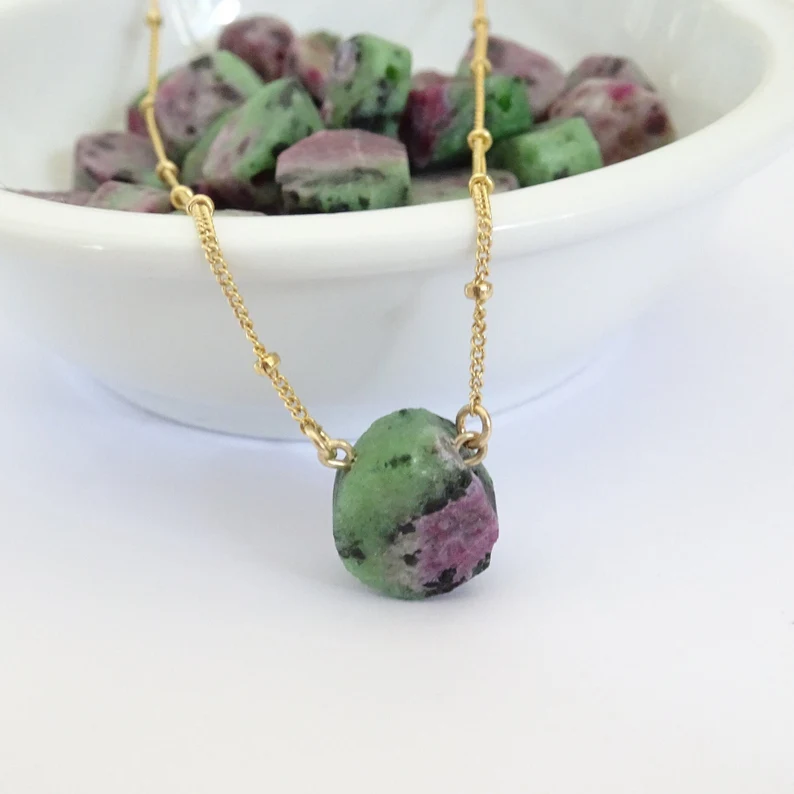
Also known as Ruby in Zoisite or just Ruby Zoisite, anyolite is a green zoisite stone with red or pink ruby crystals in it. The end result is a beautiful mixture of the two, with gorgeous green and pink colors flowing into one another. Sometimes there are black inclusions as well, which can be undesirable. Anyolite is most often used for cabochons, ornamental objects, small statuettes, figurines, or tumbled stones.
3. Thulite
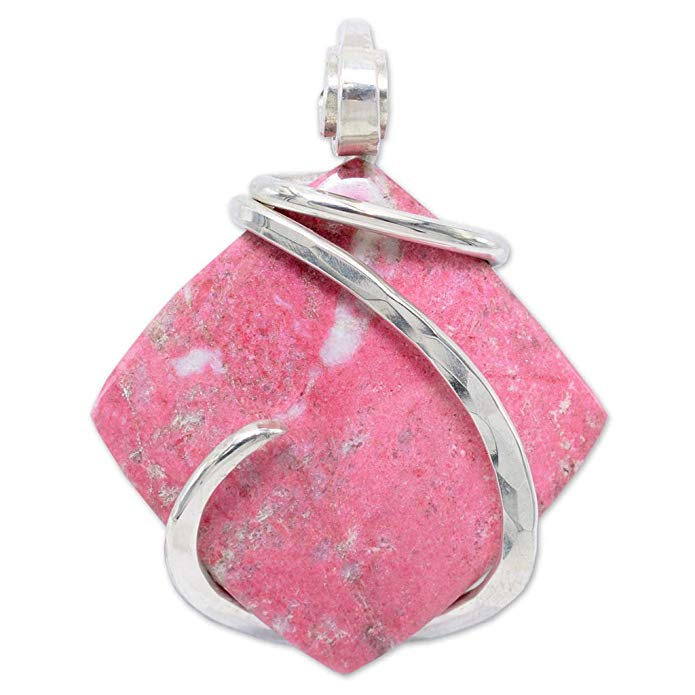
This opaque pink variety of zoisite is often cut into cabochons or small figurines. It’s quite rare, even though it’s found in multiple locations around the globe. It’s not a mainstream gemstone but it makes for beautiful jewelry when used.
Where Is Zoisite Found?
Zoisite is a relatively rare gemstone. Unlike tanzanite, zoisite in general isn’t rare because it’s only found in one or two locations, it’s rare because it’s only available in small quantities in all of its traditional mining sources.
The main mining locations for zoisite are these: Tanzania for tanzanite, Kenya for anyolite, Norway, Namibia, Australia, and North Carolina, U.S. for Thulite, and Switzerland, Austria, India, Pakistan, and Washington, U.S. for other standard zoisite minerals.
How To Evaluate Zoisite Quality
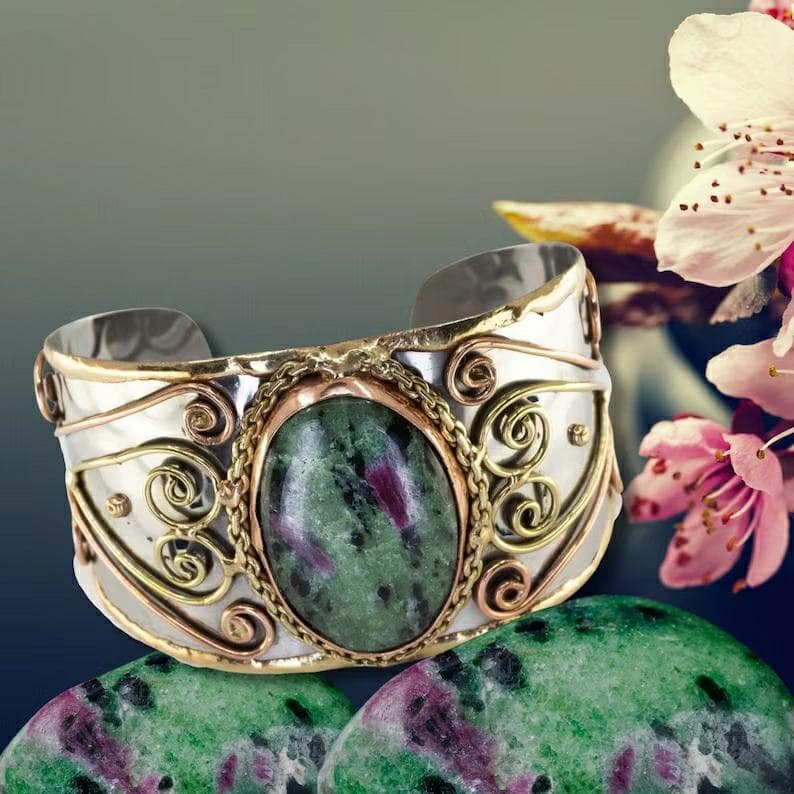
The quality of most zoisite varieties depends on the lack of visible and undesirable inclusions, the clarity and color of the piece, as well as on how vitreous the luster is. More transparent zoisite stones are also preferred over translucent pieces but this depends on the variety of zoisite. All these factors result in large variations in the quality and pricing of zoisite stones.
With tanzanite stones, for example, you’ll have to look for the quality of the cut, the richness of the color, as well as the clarity of the stone. Tanzanite is also the most valuable variety of zoisite and can be on par with blue sapphires in terms of beauty and color.
If you’re looking for anyolite, thulite or other zoisite stones for ornaments or artisan jewelry such as earrings and bracelets, clarity isn’t as important. Instead, you’d be looking for saturated and vivid color and beautiful luster.
Zoisite vs. Ruby Zoisite
We’ve already talked about ruby zoisite, but we’ll reiterate it the differences here as it’s one of the frequent questions we get asked about zoisite.
Ruby zoisite is a variety of zoisite and is especially popular for ornaments and decorations. It’s neither transparent nor translucent but is instead opaque. It has a similar hardness of 6.5 to 7 on the Mohs scale, however, and it also has a vitreous luster.
Is Zoisite Jewelry a Good Idea?
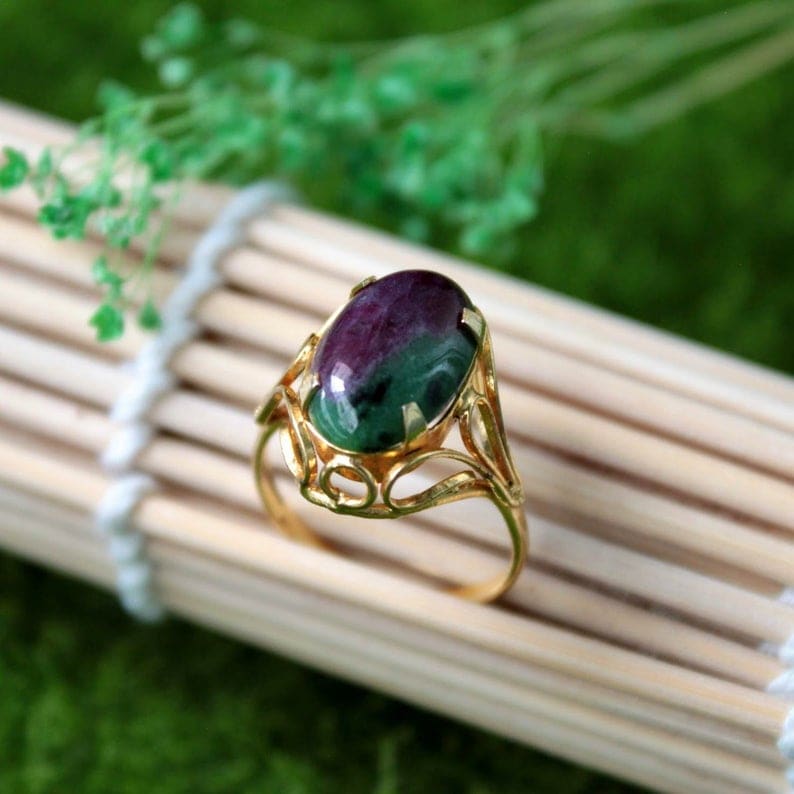
Different zoisite variations are used in different types of jewelry. Most zoisite stones are cut into beads and cabochons or are used in ornamentations and artisan figurines, statuettes, and other such items. For a zoisite piece to be used in high-end jewelry such as rings, necklaces, earrings or bracelets, it needs to have very high clarity, a rich and uniform color, excellent transparency and needs to be expertly cut.
Apart from tanzanite, which we won’t go into detail into here, for other, opaquer zoisite variations, beads, cabochons, and ornamentations are the main uses. These types of zoisite are perfect for bohemian and hippie style jewelry, especially when combined with silver wire, leather, and other natural materials. However, when set in quality mountings, even inexpensive zoisite can take on a rich and valuable look.
In terms of value, prices vary greatly. Where some tanzanite jewelry pieces can have 4-digit price tags, many zoisite or ruby zoisite artisan items can be in the low 2-digit price range.
How To Care For Zoisite
As we mentioned, zoisite, in all its variants, has a hardness of 6.5 to 7 on the Mohs scale. This means that it can be easily scratched. For that reason, zoisite jewelry should be handled with care.
Never store it together with other gemstones or jewelry pieces that are harder than the zoisite, most precious stones or jewelry metals can scratch it.
As far as cleaning is concerned, warm soapy water with a mild detergent and a soft piece of cloth usually do the trick. Never use stronger chemicals as they can easily damage the gemstone. Avoid ultrasonic cleaners and harsh detergents.
Zoisite Meaning And Symbolism
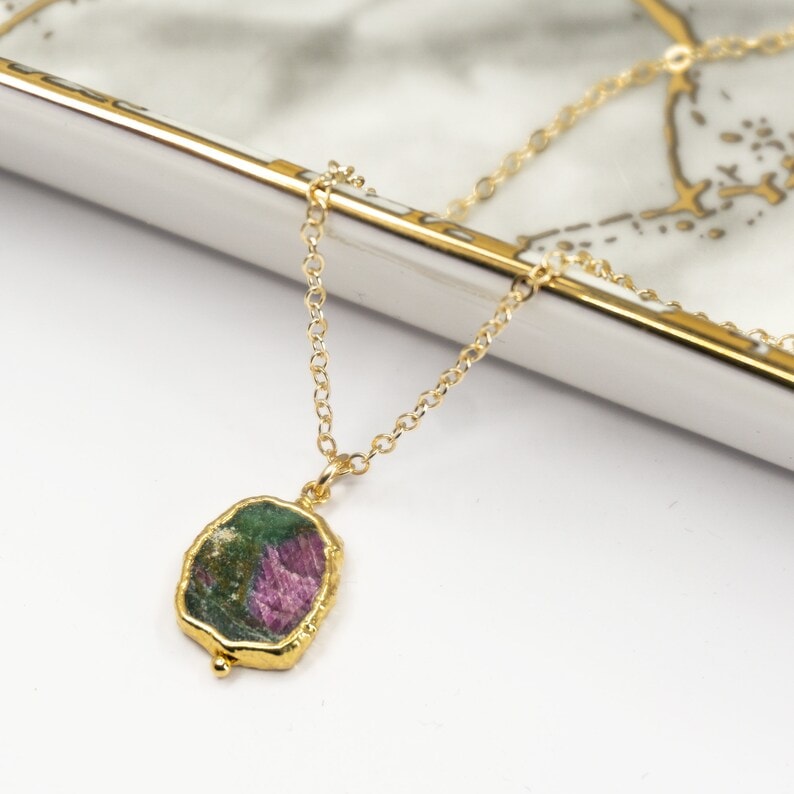
Zoisite, in most of its variations, is believed to bring joy and discovery into its owner’s life. It’s also said to drive people to adventures and a quest for self-discovery.
Many think it also makes us conscious of hidden strengths we might have, especially ones that have been buried in our psyche since our childhood years.
Overall, this a stone that people get and use when they want to overcome their self-destructive urges and find their inner strength to turn their life around.
For those who believe in the metaphysical properties of crystals, having a zoisite near at hand will promote good vibes and help dispel negativity and emotions like anger, despair, and powerlessness.
Where to Find Zoisite Jewelry
Zoisite isn’t a mainstream gemstone, so finding zoisite jewelry at your local store might prove difficult. Instead, taking your search online will give you a range of options and prices to choose from.
We recommend starting your search on Amazon or Etsy as these two platforms bring together the products of a host of creative designers and retailers onto one place for easy comparison.
Wrapping Up
Zoisite, in all its variants, offers a unique and vibrant choice for those seeking to add a splash of color to their jewelry collection. Whether it’s the intense blue of Tanzanite, the earthy charm of Ruby Zoisite, or the romantic hue of Thulite, Zoisite’s versatility ensures there’s a perfect piece for every taste and occasion. Just remember to handle your Zoisite pieces with care to ensure their beauty endures for years to come.
